 |
Reviewed by Sean Hert |
 |
As a well known naval historian and analyst, Dr. Norman Friedman should need no introductions. He has written many books on subjects of great interest to modellers, including a well-known series of reference works covering the different United States Navy classes of ships; US Destroyers, US Cruisers, etc. He now turns his skills onto creating a new series of reference works concerning British warships of the 20th Century. This latest work covers the British Cruisers.
This book spans 11 chapters, with an appendix covering the fast minelayers and section of notes. The introduction establishes the need for, and role of, cruisers in the Royal Navy at the start of the 20th Century. Great Britain comprised a vast, worldwide empire with expansive holdings connected only by the world's oceans. These sea lines of communcation, coupled with commerce and the growing imperialist designs of the rest of theworld's powers, necessitated the creation of modern ships to patrol and protect these holdings.
The next few chapters deal with the requirements of a far-flung empire, and the designs to meet those challenges. The following chapters break down both topically and chronologically the cruiser classes as built, and then the book gets into World War Two. These chapters form the most informative sections of the book, and require attentive reading to follow the wartime improvements. The later parts of the book cover the post-war ships, notably the Tiger class and a brief section on Invincible. The book closes with an appendix on the fast minelayers, and an extensive, in-depth section of notes.
Book Contents
- Glossary and Abbreviations
- Acknowledgements
- CHAPTER 1 Introduction
- CHAPTER 2 Protecting Trade
- CHAPTER 3 Destroyer-Killers
- CHAPTER 4 War Experience
- CHAPTER 5 Treaties and Heavy Cruisers
- CHAPTER 6 The 1930 London Treaty and its Cruisers
- CHAPTER 7 The Slide toward War
- CHAPTER 8 War
- CHAPTER 9 Wartime Cruiser Design
- CHAPTER 10 Post-War Cruisers
- CHAPTER 11 The Missile Age
- APPENDIX Fast Minelayers
- Notes
- Bibliography
- Data List (specifications)
- List of Ships
- Index
The book has many photographs of varied sizes. Some of these are excellent, crisp and clear, while others -typically older- are less detailed. These photos cover wide range of ships and classes, but unfortunately, very few of these images are close-up, detaill shots; most are full length pictures. These photos have extensive captions, some of which are quite detailed reading on their own.
To accompany these photos, there are also excellent line drawings by A.D. Baker III, Alan Raven, Paul Webb, John Dominy and even a few by the author himself. Most drawings are outboard profile with an accompaning plan view of select vessels; either as representative of a class, or as an exception. These drawings are either half- or full page width, placed horizonatally on the page, not landscape fashion as with the earlier US volumes. This tends to make the drawings smaller, and the detailed drawings less clear- but still useful and worthwhile.
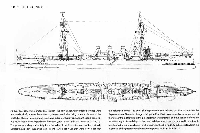 |
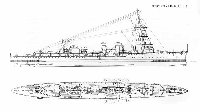 |
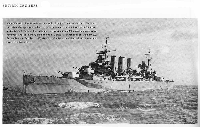 |
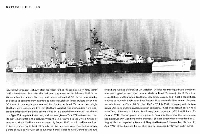 |
 |
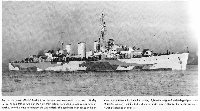 |
| Scans are reduced quality. | ||
This is a great reference, and would be a welcome addition to most libraries. If you enjoyed, appreciated or found useful any of Friedman's earlier works on US ships, you should find the same with British Cruisers. While not a fault, this book does not feature the close up photos and detailed drawings of some other books on the market, notably British Cruisers of World War Two, limiting its utility for modelers, it is still a fine reference work with much to offer.
British Cruisers: Two World Wars and After by Norman Friedman is available direct from the publisher, Seaforth Publishing (an imprint of Pen and Sword books), Amazon.com US and UK, and the Naval Institute Press (800-233-8764). List Price is $85.00; actual prices vary.
Modelwarships.com thanks Seaforth Publishing for providing us with this review sample.
 |
